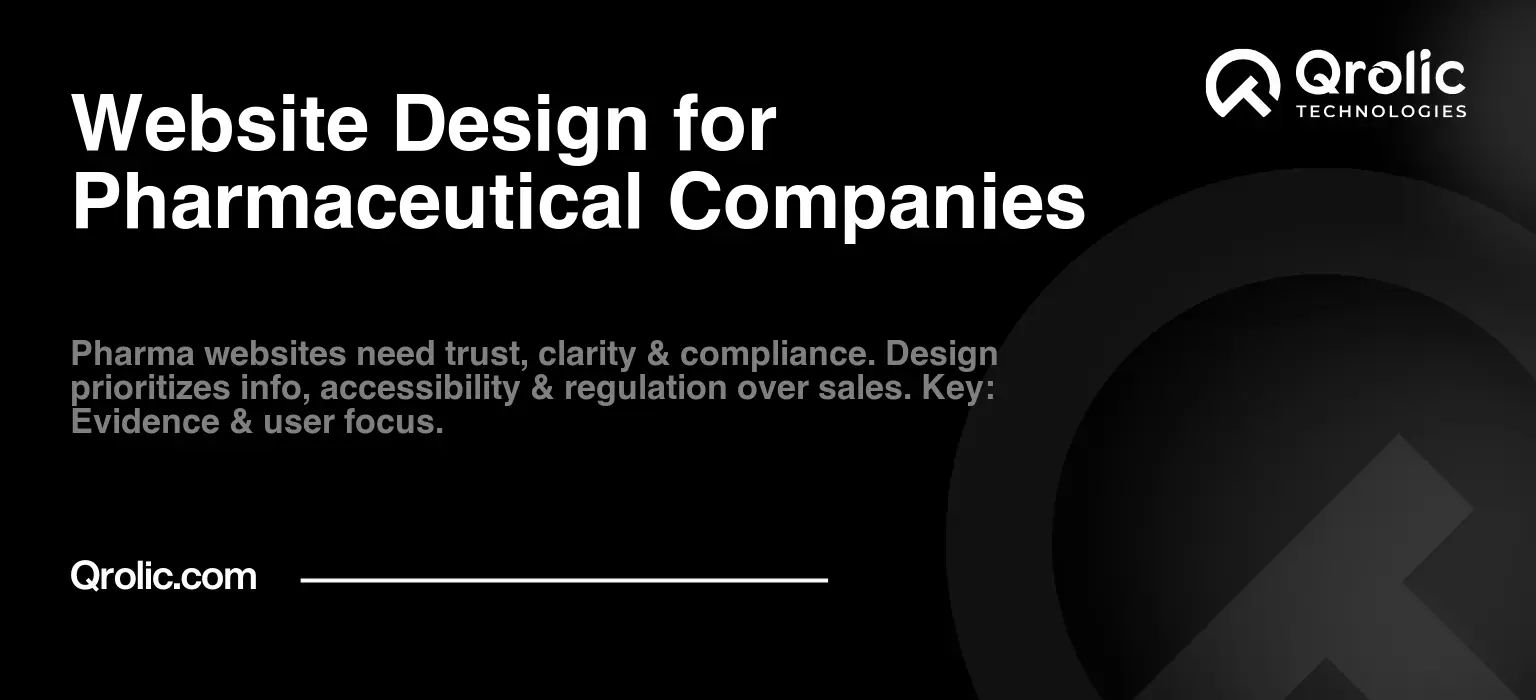Quick Summary:
- Pharma websites need high trust, accuracy, and strict compliance.
- Focus on clear navigation, quality content, and robust security.
- Design must serve diverse audiences: patients, pros, investors.
Table of Contents
- The Vital Role of Website Design in the Pharmaceutical Industry
- Why Pharmaceutical Website Design Differs from Other Industries
- Key Differences Summarized:
- Essential Elements of Effective Pharmaceutical Website Design
- 1. Intuitive Navigation and Information Architecture
- 2. High-Quality, Evidence-Based Content
- 3. Mobile Responsiveness and Accessibility
- 4. Trust-Building Design and Messaging
- 5. Search Engine Optimization (SEO) for Pharma
- 6. Security and Data Privacy
- Designing for Different Target Audiences
- 1. Patients: Empowerment Through Information
- 2. Healthcare Professionals: A Hub for Clinical Knowledge
- 3. Investors: Showcasing Innovation and Potential
- The Importance of User Experience (UX) in Pharma Web Design
- 1. Conducting User Research
- 2. Creating User Personas
- 3. Designing User Flows
- 4. Prioritizing Usability
- Navigating Regulatory Compliance in Pharmaceutical Web Design
- 1. FDA Guidelines
- 2. HIPAA Compliance
- 3. Other Regulations
- 4. Working with Legal Counsel
- The Future of Pharmaceutical Website Design
- 1. Personalized Experiences
- 2. Artificial Intelligence (AI) and Chatbots
- 3. Virtual Reality (VR) and Augmented Reality (AR)
- 4. Focus on Patient Engagement
- Qrolic Technologies: Your Partner in Pharmaceutical Web Design
- Why Choose Qrolic Technologies?
- Our Services
- Let’s Discuss Your Project
The Vital Role of Website Design in the Pharmaceutical Industry
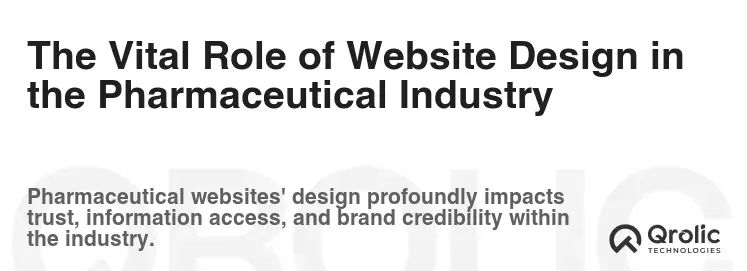
The pharmaceutical industry operates in a unique landscape. Trust, credibility, and stringent regulations are paramount. Your website isn’t just an online brochure; it’s a critical tool for communicating complex information, building trust with patients and healthcare professionals, and showcasing your innovation. A well-designed website can be the cornerstone of your digital strategy, impacting everything from brand perception to regulatory compliance.
Why Pharmaceutical Website Design Differs from Other Industries
Unlike e-commerce or entertainment websites, pharmaceutical websites need to navigate a complex web of regulations and ethical considerations. Direct-to-consumer (DTC) advertising laws, patient privacy (HIPAA), and the need for accurate and unbiased information are all factors that heavily influence design and content strategy.
- Regulatory Compliance: Ensuring adherence to FDA guidelines and other regulatory requirements is non-negotiable.
- Clarity and Accuracy: Presenting complex medical information in a clear, understandable, and unbiased manner is crucial.
- Patient-Centric Approach: Designing with the patient’s needs and understanding in mind, providing resources and support.
- Building Trust: Establishing credibility through transparent communication and evidence-based information.
- Accessibility: Ensuring the website is accessible to all users, including those with disabilities, in accordance with WCAG guidelines.
Key Differences Summarized:
| Feature | General Website | Pharmaceutical Website |
|---|---|---|
| Primary Goal | Sales, lead generation, entertainment | Information dissemination, building trust, compliance |
| Content | Marketing-focused, persuasive | Evidence-based, objective, regulatory compliant |
| Target Audience | Broad, often segmented by demographics or interests | Patients, healthcare professionals, investors |
| Regulations | Fewer restrictions | Highly regulated (FDA, HIPAA, etc.) |
| Design Focus | Aesthetics, user engagement | Clarity, accessibility, trustworthiness |
Essential Elements of Effective Pharmaceutical Website Design
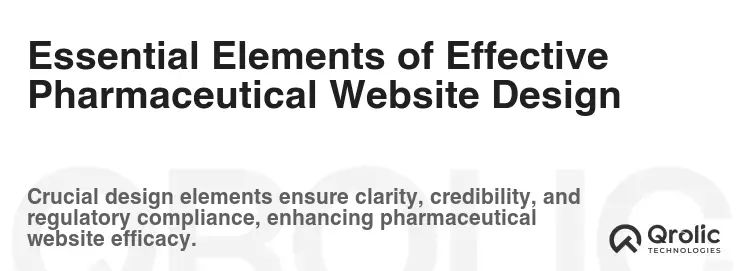
A successful pharmaceutical website expertly blends aesthetics with functionality, prioritizes user experience, and adheres to strict industry guidelines. Here are the core elements that contribute to its effectiveness:
1. Intuitive Navigation and Information Architecture
Users should be able to easily find the information they need, whether it’s details about a specific medication, clinical trial data, or contact information. A well-structured website with clear navigation is paramount.
- Clear Menu Structure: Use simple and descriptive labels for menu items.
- Search Functionality: Implement a robust search feature that allows users to quickly find specific content.
- Breadcrumbs: Provide breadcrumb navigation to help users understand their location within the website.
- Sitemap: Create a sitemap to guide both users and search engines.
2. High-Quality, Evidence-Based Content
Content is king, especially in the pharmaceutical industry. It must be accurate, up-to-date, and supported by scientific evidence.
- Drug Information: Provide comprehensive information about your products, including indications, dosage, side effects, and contraindications.
- Clinical Trial Data: Share clinical trial results in a transparent and accessible manner.
- Disease Information: Offer educational resources about diseases and conditions that your products treat.
- Patient Support Materials: Provide resources and tools to help patients manage their health.
- Healthcare Professional Resources: Offer materials specifically designed for healthcare professionals, such as prescribing information and continuing medical education (CME) resources.
3. Mobile Responsiveness and Accessibility
With the increasing use of mobile devices, your website must be responsive and provide a seamless experience across all devices. Accessibility is equally important, ensuring that users with disabilities can access and use your website.
- Responsive Design: Ensure your website adapts to different screen sizes and resolutions.
- WCAG Compliance: Adhere to the Web Content Accessibility Guidelines (WCAG) to make your website accessible to users with disabilities.
- Screen Reader Compatibility: Ensure your website is compatible with screen readers used by visually impaired users.
- Keyboard Navigation: Enable keyboard navigation for users who cannot use a mouse.
- Alternative Text for Images: Provide alternative text for all images to describe their content to screen readers.
4. Trust-Building Design and Messaging
Establishing trust is crucial in the pharmaceutical industry. Your website should convey professionalism, credibility, and transparency.
- Professional Design: Use a clean, modern design that reflects your brand identity.
- Credentials and Expertise: Highlight the expertise of your team and the scientific rigor of your research.
- Testimonials and Case Studies: Share testimonials from healthcare professionals and case studies that demonstrate the effectiveness of your products.
- Contact Information: Make it easy for users to contact you with questions or concerns.
- Privacy Policy and Terms of Use: Clearly display your privacy policy and terms of use.
5. Search Engine Optimization (SEO) for Pharma
SEO is crucial for driving organic traffic to your website. Pharmaceutical SEO requires a nuanced approach, considering the specific keywords and search behavior of patients, healthcare professionals, and investors.
- Keyword Research: Identify relevant keywords that your target audience is using to search for information. (e.g., “pharmaceutical website design,” “drug company Web Development,” “pharma website agency”, “[drug name] side effects”, “[disease] treatment options”).
- On-Page Optimization: Optimize your website content and structure for search engines.
- Off-Page Optimization: Build backlinks from reputable websites in the healthcare industry.
- Technical SEO: Ensure your website is technically sound and easy for search engines to crawl and index.
- Local SEO: If you have physical locations, optimize your website for local search.
6. Security and Data Privacy
Protecting user data is paramount, especially in the healthcare industry. Implement robust security measures to safeguard sensitive information.
- HTTPS Encryption: Use HTTPS to encrypt all data transmitted between your website and users’ browsers.
- Data Protection Compliance: Comply with relevant data protection regulations, such as GDPR and HIPAA.
- Secure Hosting: Choose a secure hosting provider that implements robust security measures.
- Regular Security Audits: Conduct regular security audits to identify and address vulnerabilities.
- User Authentication: Implement strong user authentication measures, such as multi-factor authentication, to protect user accounts.
Designing for Different Target Audiences
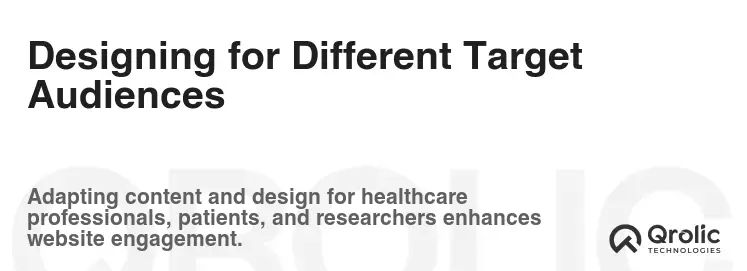
Pharmaceutical websites must cater to a diverse range of audiences, each with unique needs and expectations.
1. Patients: Empowerment Through Information
For patients, your website should be a reliable source of information about diseases, treatments, and support resources.
- Easy-to-Understand Language: Use clear and simple language, avoiding medical jargon.
- Patient Education Materials: Provide educational resources about diseases and conditions.
- Treatment Information: Offer detailed information about treatment options, including benefits and risks.
- Support Resources: Provide links to patient support groups and other helpful resources.
- FAQs: Answer frequently asked questions about diseases, treatments, and medications.
2. Healthcare Professionals: A Hub for Clinical Knowledge
Healthcare professionals need access to accurate and up-to-date information to make informed decisions about patient care.
- Prescribing Information: Provide comprehensive prescribing information for your products.
- Clinical Trial Data: Share clinical trial results in a transparent and accessible manner.
- Medical Education Resources: Offer continuing medical education (CME) resources.
- Professional Development Tools: Provide tools and resources to help healthcare professionals stay up-to-date on the latest medical advancements.
- Contact Information for Medical Affairs: Make it easy for healthcare professionals to contact your medical affairs team with questions or concerns.
3. Investors: Showcasing Innovation and Potential
Investors are interested in your company’s financial performance, pipeline, and growth potential.
- Financial Reports: Provide access to your company’s financial reports.
- Pipeline Information: Share information about your drug development pipeline.
- Investor Presentations: Offer investor presentations and webcasts.
- Press Releases: Publish press releases about important company developments.
- Corporate Governance Information: Provide information about your company’s corporate governance practices.
The Importance of User Experience (UX) in Pharma Web Design
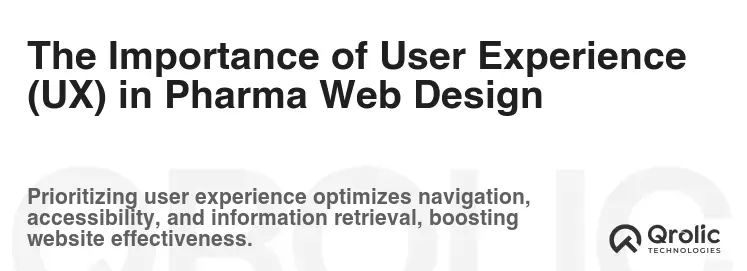
User experience (UX) is the key to creating a website that is both effective and enjoyable to use. A positive UX can improve engagement, build trust, and drive conversions.
1. Conducting User Research
Understanding your target audience is essential for creating a positive UX. Conduct user research to learn about their needs, preferences, and pain points.
- Surveys: Conduct surveys to gather quantitative data about user behavior.
- Interviews: Conduct interviews to gather qualitative data about user needs and preferences.
- Usability Testing: Conduct usability testing to identify usability issues and areas for improvement.
- Analytics Analysis: Analyze website analytics data to understand how users are interacting with your website.
- Heuristic Evaluation: Conduct a heuristic evaluation to identify potential usability problems based on established usability principles.
2. Creating User Personas
Based on your user research, create user personas to represent your target audience. User personas are fictional characters that embody the characteristics, needs, and goals of your target users.
3. Designing User Flows
Map out the user flows for key tasks, such as finding information about a specific medication or contacting customer support. User flows illustrate the steps that users take to accomplish a specific task on your website.
4. Prioritizing Usability
Ensure that your website is easy to use and navigate.
- Clear and Concise Content: Use clear and concise language, avoiding jargon and technical terms.
- Intuitive Navigation: Design a navigation system that is easy to understand and use.
- Mobile Responsiveness: Ensure that your website is responsive and provides a seamless experience across all devices.
- Accessibility: Ensure that your website is accessible to users with disabilities.
- Fast Loading Times: Optimize your website for speed to ensure fast loading times.
Navigating Regulatory Compliance in Pharmaceutical Web Design
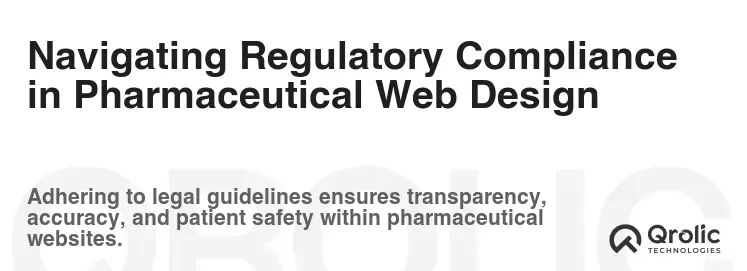
The pharmaceutical industry is heavily regulated, and your website must comply with all applicable regulations.
1. FDA Guidelines
The FDA has specific guidelines for pharmaceutical websites, particularly those that promote prescription drugs. These guidelines address issues such as:
- Fair Balance: Providing a fair balance of information about the benefits and risks of a drug.
- Truthful and Non-Misleading Information: Ensuring that all information is truthful and non-misleading.
- Adequate Provision: Providing adequate provision for disseminating approved product labeling.
- Risk Information: Clearly and prominently displaying risk information.
2. HIPAA Compliance
If your website collects or transmits protected health information (PHI), you must comply with the Health Insurance Portability and Accountability Act (HIPAA).
- Data Encryption: Encrypt all PHI that is transmitted over the internet.
- Access Controls: Implement access controls to restrict access to PHI.
- Privacy Policy: Clearly display your privacy policy and explain how you collect, use, and protect PHI.
- Business Associate Agreements: Enter into business associate agreements with any third-party vendors that have access to PHI.
3. Other Regulations
Other regulations that may apply to your pharmaceutical website include:
- GDPR (General Data Protection Regulation): If you collect data from users in the European Union, you must comply with GDPR.
- CCPA (California Consumer Privacy Act): If you collect data from residents of California, you must comply with CCPA.
- State Advertising Laws: Be aware of state laws that may regulate pharmaceutical advertising.
4. Working with Legal Counsel
It’s essential to work with legal counsel to ensure that your website complies with all applicable regulations. Legal counsel can review your website content and design to identify potential compliance issues.
The Future of Pharmaceutical Website Design

The pharmaceutical industry is constantly evolving, and website design must adapt to meet the changing needs of patients, healthcare professionals, and investors.
1. Personalized Experiences
Expect to see more personalized website experiences in the future. Websites will use data and analytics to tailor content and recommendations to individual users.
- Personalized Content Recommendations: Providing content recommendations based on user interests and behavior.
- Targeted Advertising: Delivering targeted advertising based on user demographics and interests.
- Customized User Interfaces: Creating customized user interfaces based on user preferences.
2. Artificial Intelligence (AI) and Chatbots
AI and chatbots will play an increasingly important role in pharmaceutical website design. Chatbots can provide instant answers to user questions and guide them to the information they need.
- 24/7 Customer Support: Providing 24/7 customer support through chatbots.
- Personalized Recommendations: Using AI to provide personalized recommendations.
- Data Analysis: Using AI to analyze website data and identify areas for improvement.
3. Virtual Reality (VR) and Augmented Reality (AR)
VR and AR technologies have the potential to revolutionize pharmaceutical website design. VR can be used to create immersive experiences for patients and healthcare professionals, while AR can be used to enhance the real world with digital information.
- Virtual Tours of Facilities: Providing virtual tours of manufacturing facilities and research labs.
- Interactive 3D Models: Creating interactive 3D models of drugs and medical devices.
- AR-Enhanced Patient Education Materials: Developing AR-enhanced patient education materials.
4. Focus on Patient Engagement
Websites will increasingly focus on patient engagement, providing tools and resources to help patients manage their health and connect with others.
- Online Communities: Creating online communities where patients can connect with each other.
- Mobile Apps: Developing mobile apps that help patients manage their health.
- Gamification: Using gamification techniques to encourage patient engagement.
Qrolic Technologies: Your Partner in Pharmaceutical Web Design
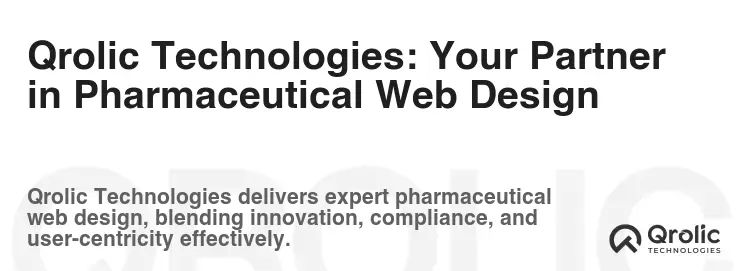
At Qrolic Technologies (https://qrolic.com/), we understand the unique challenges and opportunities facing the pharmaceutical industry. We are a leading website design and development agency with extensive experience in creating effective and compliant pharmaceutical websites.
Why Choose Qrolic Technologies?
- Deep Industry Expertise: We have a deep understanding of the pharmaceutical industry, including regulatory requirements and best practices for website design.
- Customized Solutions: We develop customized website solutions that meet your specific needs and goals.
- Experienced Team: Our team of designers, developers, and content strategists has the expertise to create a website that is both visually appealing and highly effective.
- Compliance Focus: We are committed to ensuring that your website complies with all applicable regulations, including FDA guidelines and HIPAA.
- Results-Driven Approach: We focus on delivering results that improve your brand perception, drive traffic, and generate leads.
Our Services
We offer a comprehensive range of pharmaceutical website design and development services, including:
- Website Design and Development: We create custom website designs that are visually appealing, user-friendly, and optimized for search engines.
- Content Creation: We develop high-quality, evidence-based content that informs and engages your target audience.
- SEO Optimization: We optimize your website for search engines to drive organic traffic and improve your online visibility.
- Mobile App Development: We develop mobile apps that provide patients with convenient access to information and resources.
- Regulatory Compliance Consulting: We provide consulting services to help you ensure that your website complies with all applicable regulations.
- Website Maintenance and Support: We provide ongoing website maintenance and support to ensure that your website is always up-to-date and secure.
Let’s Discuss Your Project
Contact us today to discuss your pharmaceutical website design project. We would be happy to provide you with a free consultation and proposal. Visit us at https://qrolic.com/ to learn more. We are passionate about helping pharmaceutical companies succeed online, and we are confident that we can help you create a website that meets your needs and exceeds your expectations. We help you reach wider audience with SEO optimized articles and website.
